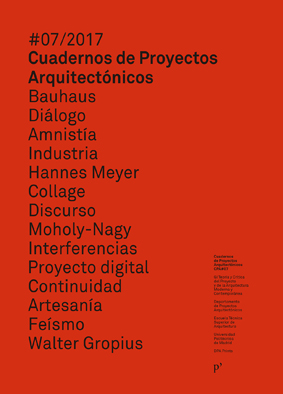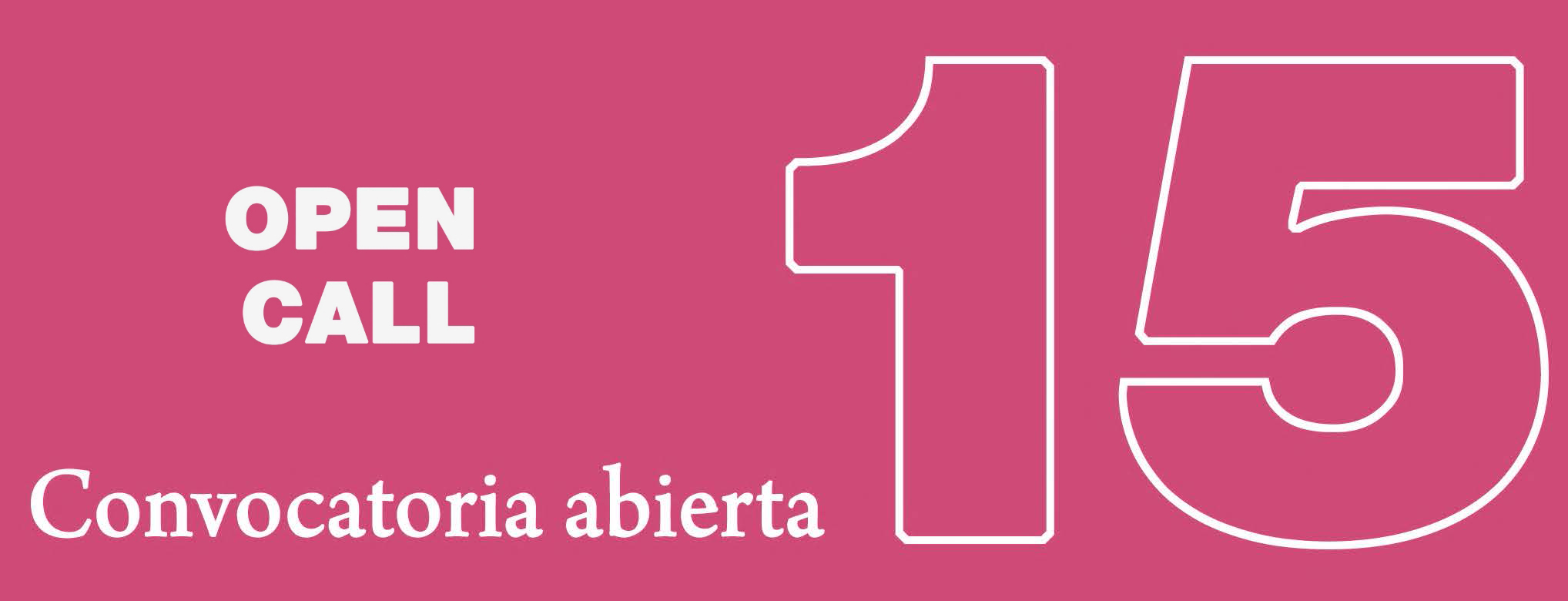Bauhaus vs Burg Giebichenstein. Two confronted models
Palabras clave:
Bauhaus, Burg Giebichenstein, Gropius, Thiersch, CraftsResumen
Abstract
Bauhaus School was undoubtedly the great umbrella of the leading representatives of artistic and architectural avant-garde in Germany. It was clearly the cultural epicenter of the western world, between 1919 and 1933 and a key institution for the understanding of modernity in european art. However, without impairing its decisive influence, it is debatable one of the merits attributed to this school: the radical novelty of his teaching program. Nearly four years before Gropius draft the founding manifesto of the school in April 1919, was already running another art school in Halle, which later would be named Burg Giebichenstein, which was a clear precedent to the educational objectives of the Bauhaus and its particular way of understanding the teaching of the arts as a collective creation around the architecture.
Descargas
Referencias
ARGAN, Giulio Carlo. Walter Gropius y la Bauhaus. Nueva Visión Ed., Buenos Aires, 1957.
BENJAMIN, Walter. La obra de arte en la era de su reproductibilidad técnica. En Discursos Interrumpidos I, Taurus Ed., Buenos Aires, 1989.
DOLGNER, Ángela. Burg Giebichenstein: die hallesche Kunstschule von den Anfängen bis zur Gegenwart (Burg Giebichenstein: la Escuela de Arte de Halle desde sus comienzos hasta el presente). Moritzburg Galería Nacional: Burg Giebichenstein - Universidad de Arte y Diseño de Halle Ed., Badisches Landesmuseum, Karlsruhe, 1993.
DOLGNER, Ángela. Walter Gropius und Paul Thiersch. En KANDT, Kevin E.; VON VOGELSTEIN, Hermann: Geburtstag von Gerd-Helge Vogel, Berlín, 2011.
DROSTE, Magdalena. Bauhaus, 1919-1933. Benedikt Taschen Ed., Koln, 2006.
GARCÍA, Rafael; GARCIA ROIG, José Manuel. Bauhaus (1919-1933). En Cuaderno de notas, 2, Dpto Composición ETSAM Ed., Madrid, 1994.
GARCIA ROIG, José Manuel. La Deutscher Werkbund. En Cuaderno de notas, 3, Dpto Composición ETSAM Ed., Madrid, 1995.
GARCÍA ROIG, José Manuel. La “Deutscher Werkbund”, técnica y cultura: el debate alemán en la “werkbund” a través de los textos. En Cuaderno de notas, 1, Dpto Composición ETSAM Ed., Madrid, 1993.
GROPIUS, Walter. Alcances de la arquitectura. La Isla Ed., Buenos Aires, 1956.
ISAACS, Reginald R. Walter Gropius. Der Mensch und sein Werk (Walter Gropius. El hombre y su obra). Mann Ed., Berlín, 1983.
KRAUSE, Robin. The Dessau Bauhaus Building 1926-1999. Bauhaus Dessau Foundation Margret Kentgens-Craig Ed., Berlín, 1998.
MOHOLY NAGY, Lázsló. La nueva visión y reseña de un artista. Ediciones Infinito Ed., Buenos Aires, 1963. Título original en alemán: Von Material zu Architektur. Primera edición en alemán en 1929.
M.WINGLE, Hans. La Bauhaus: Weimar, Dessau, Berlín, 1919-1933. Gustavo Gili Ed., Barcelona, 1980.
NEUMEYER, Fritz. Mies van der Rohe. La palabra sin artificio, reflexiones sobre arquitectura 1922/1968. El Croquis Ed., Madrid, 1995.
POSENER, Julius. La “Deutsche Werkbund”: 1907-1914. En Cuaderno de notas, 4, Dpto Composición ETSAM Ed., Madrid, 1995. (Corresponde a la lección n° 4 incluida en el fascículo 3: “Das Zeitalter Wilhelms II” (“La época de Guillermo II”) de la revista Arch+, 59, Aquisgrán, octubre de 1981.
Descargas
Publicado
Número
Sección
Licencia
1. Los autores conservan los derechos de autor y garantizan a la revista el derecho de una Licencia Creative Commons Atribución-NoComercial-SinDerivar 4.0 Internacional que permite a otros compartir el trabajo con un reconocimiento de la autoría.
2. Los autores pueden establecer por separado acuerdos adicionales para la distribución no exclusiva de la versión de la obra publicada en la revista (por ejemplo, situarlo en un repositorio institucional o publicarlo en un libro).













